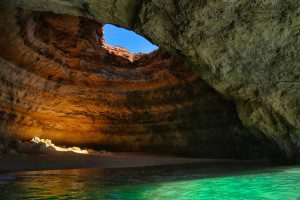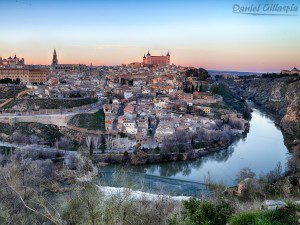
Van Gogh’s Sunflowers: Finding Inspiration at the National Gallery in London
When I’m standing in front of the bright yellow painting of Sunflowers at the National Gallery, among a herd of other tourists jockeying for position in front of me with

When I’m standing in front of the bright yellow painting of Sunflowers at the National Gallery, among a herd of other tourists jockeying for position in front of me with

Benagil Sea Cave in the Algarve is a true natural wonder. It’s a sea cave with a natural occurring oculus that towers over its own secluded beach. At the right

I remember the first day I arrived at my hostel in Bondi Beach, Australia. I was eager to set out and explore the amazing country known for its exotic wildlife

From Mirador del Valle, you watch as the sunset casts its orange glow on the Alcázar towering above a maze of cobblestone roads that wind through a hillside covered in

American football is by far my favorite sport to watch, especially live. I’ve been to over 30 college football games over the past few years but never once had I made

The thought of being submerged in a confining water tank with sharks seemed like the ultimate adrenaline rush. So when I found at that I could enter a shark tank

The British Museum is often considered one of the top things to do in London. That should come to no surprise as the museum is free to enter and holds

There are actually many “love lock” bridges in Paris, though two of them stand out amongst the rest. The “Pont de l’Archeveche,” is located just next door to the Notre Dame

My recent trip to Iceland to see the northern lights did not go as planned in many more ways than one. One of those failures was not being able to
| Cookie | Duration | Description |
|---|---|---|
| cookielawinfo-checkbox-analytics | 11 months | This cookie is set by GDPR Cookie Consent plugin. The cookie is used to store the user consent for the cookies in the category "Analytics". |
| cookielawinfo-checkbox-functional | 11 months | The cookie is set by GDPR cookie consent to record the user consent for the cookies in the category "Functional". |
| cookielawinfo-checkbox-necessary | 11 months | This cookie is set by GDPR Cookie Consent plugin. The cookies is used to store the user consent for the cookies in the category "Necessary". |
| cookielawinfo-checkbox-others | 11 months | This cookie is set by GDPR Cookie Consent plugin. The cookie is used to store the user consent for the cookies in the category "Other. |
| cookielawinfo-checkbox-performance | 11 months | This cookie is set by GDPR Cookie Consent plugin. The cookie is used to store the user consent for the cookies in the category "Performance". |
| viewed_cookie_policy | 11 months | The cookie is set by the GDPR Cookie Consent plugin and is used to store whether or not user has consented to the use of cookies. It does not store any personal data. |
